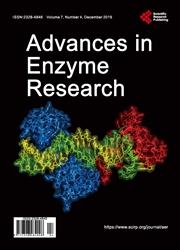Microbial Production of Chiral Hydroxy Esters and Their Analogs: Biocatalytic Reduction of Carbonyl Compounds by Actinobacteria, Agromyces and Gordonia Strains
引用次数: 1
Abstract
We screened 15 Agromyces strains from the Microbacteriaceae family and 16 Gordonia strains from the Gordoniaceae family to investigate their biocatalytic ability to reduce carbonyl compounds. Two Agromyces strains (A. soli NBRC109063 and A. humatus NBRC109085) and two Gordonia strains (G. hydrophobica NBRC16057 and G. malaquae NBRC108250) grew well in 230 medium. The stereoselective reduction of various carbonyl compounds using these four strains was investigated. We discovered that these strains can reduce aliphatic and aromatic α-keto esters and an aromatic α-keto amide. On the basis of the conversion rate and stereoselectivity of the alcohols produced, G. hydrophobica NBRC16057 is a potential biocatalyst for the stereoselective reduction of α-keto esters and an aromatic α-keto amide to the corresponding chiral alcohols. Our results also suggest that the reduction of ethyl 2-methylacetoacetate by wet G. hydrophobica NBRC16057 cells in the presence of L-glutamate is useful for the production of chiral ethyl 3-hydroxy-2-methylbutanoate.微生物生产手性羟基酯及其类似物:放线菌、Agromyces和Gordonia菌株对羰基化合物的生物催化还原
我们筛选了15株来自微杆菌科的Agromyces菌株和16株来自戈登科的Gordonia菌株,以研究它们还原羰基化合物的生物催化能力。两株土壤真菌(A.soli NBRC109063和A.humatus NBRC109085)和两株戈登尼亚菌株(G.疏水菌NBRC16057和G.malaquae NBRC108250)在230培养基中生长良好。研究了用这四种菌株对各种羰基化合物的立体选择性还原。我们发现这些菌株可以还原脂肪族和芳香族的α-酮酯和芳香族α-酮酰胺。基于所产生的醇的转化率和立体选择性,疏水G.NBRC16057是一种潜在的生物催化剂,用于将α-酮酯和芳香族α-酮酰胺立体选择性还原为相应的手性醇。我们的结果还表明,在L-谷氨酸存在下,湿疏水G.疏水NBRC16057细胞还原2-甲基乙酰乙酸乙酯可用于生产手性3-羟基-2-甲基丁酸乙酯。
本文章由计算机程序翻译,如有差异,请以英文原文为准。
求助全文
约1分钟内获得全文
求助全文

 求助内容:
求助内容: 应助结果提醒方式:
应助结果提醒方式:


